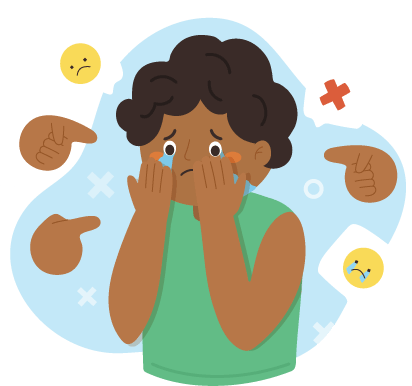
Bullying: What it is and how to act
Author: Rosa García Sánchez @pizpirettacoqueta | Educator and early childhood educator
There is an issue in society that is becoming increasingly important in the education of our children and in the climate of coexistence in our children's schools. Specifically, we are talking about bullying, or, in other words, school harassment. Every day, there are more cases in schools or high schools where children are involved in fights, in groups, against a single person, and they record the incident and upload it to social media as if it were a heroic act. We want to dispel any possible doubts and suggest measures to combat bullying. This article will be divided into six main points:

1. What is it?
As everyone knows, the term "bullying" refers to the continuous and intentional exposure of a child to physical or psychological harm by another person or group at school.
2. Where it can be produced
As I mentioned earlier, it happens at school, but the question we ask ourselves as parents is, where are there any adults watching? While it may not be common, it can happen in places where the adults in charge of the children aren't as vigilant as they should be. For example, in lines, at recess, in the hallways, in the bathroom...
3. Profile of the BULLY
Broadly speaking, children who are seen as different, such as children with disabilities, children with obesity, or children of a different race or ethnicity.

4. Profile of the STALKER
One of the characteristics of a bully is their lack of empathy, which is why they are unable to put themselves in the victim's shoes and see their suffering. They have an aggressive profile and sometimes come from unfavorable socioeconomic situations at home (tension between parents, lack of organization at home, etc.).
5. Types of bullying
The ways in which the stalker intimidates his/her victim are divided as follows:
There is an issue in society that is becoming increasingly important in the education of our children and in the climate of coexistence in our children's schools. Specifically, we are talking about bullying, or, in other words, school harassment. Every day, there are more cases in schools or high schools where children are involved in fights, in groups, against a single person, and they record the incident and upload it to social media as if it were a heroic act. We want to dispel any possible doubts and suggest measures to combat bullying. This article will be divided into six main points:

1. What is it?
As everyone knows, the term "bullying" refers to the continuous and intentional exposure of a child to physical or psychological harm by another person or group at school.
2. Where it can be produced
As I mentioned earlier, it happens at school, but the question we ask ourselves as parents is, where are there any adults watching? While it may not be common, it can happen in places where the adults in charge of the children aren't as vigilant as they should be. For example, in lines, at recess, in the hallways, in the bathroom...
3. Profile of the BULLY
Broadly speaking, children who are seen as different, such as children with disabilities, children with obesity, or children of a different race or ethnicity.

4. Profile of the STALKER
One of the characteristics of a bully is their lack of empathy, which is why they are unable to put themselves in the victim's shoes and see their suffering. They have an aggressive profile and sometimes come from unfavorable socioeconomic situations at home (tension between parents, lack of organization at home, etc.).
5. Types of bullying
The ways in which the stalker intimidates his/her victim are divided as follows:
- Physical harassment : The harasser hits, pushes, or may also hide the victim's things.
- Verbal bullying : This involves insulting, calling someone names, making threats, or provoking another child.
- Social bullying : This type of bullying occurs when the bully decides to isolate their victim, spread rumors, convince other children not to talk to them, or humiliate them in public so that the victim feels isolated.
